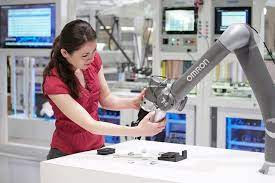15 Technology Trends In Future
15 Technology Trends In Future
1. Artificial intelligence and machine learning.
The increasing ability of machines to learn and act intelligently will absolutely transform our world. It is also the driving force behind many of the other trends on this list.
2. The Internet of Things .
3. Wearables and augmented humans.
What started with fitness trackers has now exploded into a whole industry of wearable technology designed to improve human performance and help us live healthier, safer, more efficient lives. In the future, we may even see humans merge with technology to create “augmented humans” or “transhumans.”
4. Big Data and augmented analytics.
Big Data refers to the exponential growth in the amount of data being created in our world. Thanks to augmented analytics (highly advanced data analytics, often fueled by AI techniques), we can now make sense of and work with enormously complex and varied streams of data.
5. Intelligent spaces and smart places.
Closely linked to the IoT, this trend is seeing physical spaces – like homes, offices, and even whole cities – becoming increasingly connected and smart.
6. Blockchains and distributed ledgers.
This super-secure method of storing, authenticating, and protecting data could revolutionize many aspects of business – particularly when it comes to facilitating trusted transactions.
7. Cloud and edge computing.
Cloud computing – where data is stored on other computers and accessed via the internet – has helped to open up data and analytics to the masses. Edge computing – where data is processed on smart devices (like phones) – will take this to the next level.
8. Digitally extended realities.
Encompassing virtual reality, augmented reality, and mixed reality, this trend highlights the move towards creating more immersive digital experiences.
9. Digital twins.
A digital twin is a digital copy of an actual physical object, product, process, or ecosystem. This innovative technology allows us to try out alterations and adjustments that would be too expensive or risky to try out on the real physical object.
10. Natural language processing.
This technology, which allows machines to understand human language, has dramatically changed how humans interact with machines, in particular giving rise to…
11. Voice interfaces and chatbots.
Alexa, Siri, chatbots – many of us are now quite used to communicate with machines by simply speaking or typing our request. In the future, more and more businesses will choose to interact with their customers via voice interfaces and chatbots.
12. Computer vision and facial recognition.
Machines can talk, so why shouldn’t they “see” as well? This technology allows machines to visually interpret the world around them, with facial recognition being a prime example. Although we will no doubt see greater regulatory control over the use of facial recognition, this technology isn’t going anywhere.
13. Robots and cobots.
Today’s robots are more intelligent than ever, learning to respond to their environment and perform tasks without human intervention. In certain industries, the future of work is likely to involve humans working seamlessly with robot colleagues – hence the term “cobot," or "collaborative robot."
14. Autonomous vehicles.
The 2020s will be the decade in which autonomous vehicles of all kinds – cars, taxis, trucks, and even ships – become truly autonomous and commercially viable.
15. 5G.
The fifth generation of cellular network technology will give us faster, smarter, more stable wireless networking, thereby driving advances in many other trends (e.g., more connected devices and richer streams of data).
















.jpg)

Comments
Post a Comment